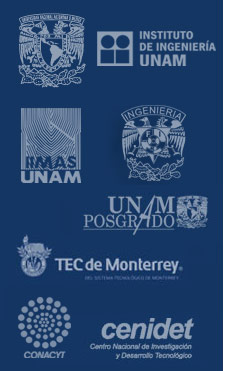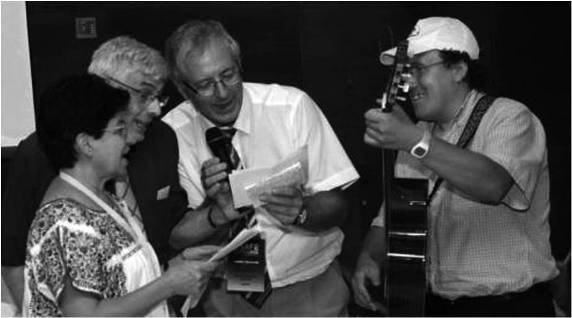History 7th Safeprocess The IFAC SAFEPROCESS Symposium series is devoted to fault detection, diagnosis and safety of technical processes. The first symposium took place in Baden-Baden in 1991. This was followed, at three-year intervals, by Helsinki, Hull, Budapest, Washington and Beijing. At the invitation of the Spanish NMO of IFAC, Barcelona was selected as the venue of the 2009 Symposium. The National Organizing Committee was chaired by Joseba Quevedo, of the Technical University of Catalonia. The key members of the NOC were Teresa Escobet, Bernardo Morcego, Vicenc Puig and Andreu Quesada, responsible for local arrangements, computer support, publications and finances, respectively. They were supported by a large group of enthusiastic young people. An International Program Committee was set up, with Janos Gertler as chair, Ron Patton as co-chair and Alf Isaksson as industrial vice-chair. The IPC had 28 additional members. This was a “working” IPC; the subject area was subdivided into sub-areas and each IPC member had full responsibility for the papers in one of those sub-areas, obtaining reviews and making acceptance/rejection recommendations. Invited session proposals were solicited and 14 of those received by the IPC. The papers in the invited sessions were subjected to the same individual reviewing and acceptance/rejection decisions as the contributed papers. Thirteen of the invited sessions finally materialized, several of them supplemented with appropriate contributed papers, in place of the invited ones rejected in the reviewing process. A total of 381 regular paper submissions were received, 90 for the invited sessions and 291 contributed directly by the authors. Due to the diligent work of the members of the IPC, 1039 reviews were obtained, an average of 2.72 per paper. 68 invited and 198 contributed papers were finally accepted. Of the latter, 8 were then withdrawn before the Symposium and 3 were scheduled but not presented (“no show”). The papers were arranged into 45 sessions (13 invited and 32 contributed) that took place in five parallel tracks. The IPC and NOC placed a great emphasis on the selection of plenary and semi-plenary subjects, and the invitation of outstanding people to present them. Three plenary and six semi-plenary lectures were arranged, most of them dealing with various application areas. The 3 plenaries were: The 6 semi-plenaries were: In addition to the plenaries, Rolf Isermann gave a review at the opening session of the history of the Safeprocess Symposia, and his brief perspective on the state of the art. The authors of the papers presented at the symposium came from 44 countries. Many papers had an international team of authors, thus it is difficult to talk of the distribution of papers by country. A significant innovation has been the introduction of two symposium awards. The Paul Frank Award for the Best Theory Paper was established by the University of Duisburg-Essen, to commemorate the pioneering contributions of the late Professor Frank to the theory of fault detection and diagnosis. The ABB Best Application Paper Award was sponsored by the ABB Company. Either award carries a certificate and a cash-prize of 1000 Euros. Appreciation is due to Steven Ding and Alf Isaksson who negotiated the sponsorship of the awards with their respective organization. Two award selection committees were set up, Ron Patton chairing the Frank Award committee and Rolf Isermann the ABB Award committee. They selected 5 resp. 6 finalists (who also received a certificate), based on the written papers and the reviews, then made their final selection of the winner after listening to the presentations. The winners and finalists are: Paul Frank Best Theory Paper Award Winner: Finalists: ABB Best Application Paper Award Winner: Finalists: Combining Stochastic Automata and Classification Techniques for Supervision and Safe Orchard Navigation, by Fabio Caponetti, Mogens Blanke Comparison between Leak Detection Methods for Open Water Channels, by Nadia Bedjaoui, Erik Weyer. A Study of Rolling-Element Bearing Fault Diagnosis Using Motor‘s Vibration and Current Signatures, by Zhenyu Yang. Most of the plenary/semi-plenary lectures were really outstanding. The technical sessions were of very good quality. The award selection committees complained that they had a difficult task to pick the winner since there were so many good papers. The technical arrangements in the lecture rooms were perfect. It was the general feeling of the participants that the overall technical level of the symposium surpassed any and all of the past SAFEPROCESS Symposia. Four of the (semi-)plenaries are being published in the IFAC journal Annual Reviews in Control. Four others, together with the finalists of the Application Award, are being considered for a special section in Control Engineering Practice. The Theory Award finalists are being recommended for consideration to Automatica. And one of the invited sessions is being offered for a special section in the International Journal of Robust and Nonlinear Control. The participants were treated to a welcoming and farewell reception at the hotel, and lots of coffee and nibbles in the session breaks. Following a quick sight-seeing tour, the symposium banquet took place at an excellent sea-side restaurant. The winners and finalists of the awards were recognized at the banquet. One of the highlights of the evening was a rendition of La Cucaracha by the Safeprocess Trio, Joseba Quevedo, Ron Patton and Cristina Verde (NOC Chair of Safeprocess 2012, Mexico City). Barcelona, of course, is an ideal location. While most hard-core Safeprocess enthusiasts would probably have gone to wherever the meeting was organized, it was certainly a great extra bonus to get Barcelona as part of the conference package. Janos Gertler
The 6th IFAC Symposium on Fault Detection, Supervision and Safety of Technical Processes, SAFEPROCESS 2006, was held in Beijing, China,from 30 August to 1 September, 2006. ThisSymposium was the most successful one so far,with the highest attendance rate – over 200participants from all continents and 28 countries.The Symposium was sponsored by the IFAC Technical Committee on Fault Detection,Supervision and Safety of Technical Processes,SAFEPROCESS, and co-sponsored by nine otherIFAC Technical Committees. The 2006Symposium was organised by the TsinghuaUniversity together with the Beihang Universityin Beijing, and supported by a number of researchinstitutes and different industries in China. The previous symposia on this important issue took place in Baden-Baden, Germany (1991), Espoo, Finland (1994), Kingston-upon-Hull, UK (1997), Budapest, Hungary (2000), and Washington DC, USA (2003). The aim of the 6th IFAC SAFEPROCESS Symposium was to create an international forumfor researchers and practitioners, both fromacademia and industry, to present the latestresearch results and ideas in the field of faultdetection and diagnosis including, but not beinglimited to, the following areas: • Fault detection, isolation and identification During the last years, fault detection and diagnosis have developed into a major research area, located at the intersection of systems and control engineering, artificial intelligence, applied mathematics and statistics, and such application fields as chemical, electrical, mechanical and aerospace engineering. The technical programme of the Symposium consisted of three plenary and two semi-plenary sessions, one industrial session with two talks, eight invited sessions including a session on Demonstration of process monitoring and diagnostics software tools, and 36 regular paper sessions. The plenary lectures on: • Fault diagnosis of networked control systems (H.J. Fang, Hao Ye, Maiying Zhang) and the semi-plenary ones on: • The practical problems of fault isolation in large scale industrial systems (J. M. Koscielny, M. Bartys, M. Syfert) were given by the above-listed well-known scientists in these fields from China, the UK, Sweden, Poland and Canada. Moreover, two industrial talks were given by experts from Siemens Ltd., China (Johann Strobl), and Emerson Process Management Asia-Pacific (Robin Lu). During the opening ceremony, Prof. Ronald J. Patton, the former chair of the TC on SAFEPROCESS, gave a talk and presentation prepared together with Prof. Steven Ding commemorating Prof. Paul M. Frank, who passed away in 2005. We lost a friend and internationally recognised research leader. The National Organising Committee arranged a technical exhibition in parallel with the symposium during the first two days. The International Programme Committee accepted a total of 258 papers out of 392 submissions. Among those, 42 were by authors from the host country. The percentage of papers presented was very high, with only few authors being unable to attend the meeting and present their papers. A total of 248 papers were recommended for publication in the Symposium Proceedings, to be published by Elsevier. The TC meeting was held on the second day of the event, and a number of issues was discussed including a preliminary report on SAFEPROCESS 2006, the choice of the proposal for SAFEPROCESS 2009, the milestone report before the next World Congress in Korea. Three proposals were considered for SAFEPROCESS 2009, with the locations in Aalborg (Denmark), Barcelona (Spain) and Saint-Malo (France). After two rounds of voting, the decision was to hold the symposium in Barcelona, with Prof. Joseba Quevedo as the NOC chair. The social aspect of the symposium was just as satisfactory. Beside the welcome reception, all participants were invited to a banquet at a traditional Chinese restaurant, with a performance in the garden (playing various old instruments). Moreover, during the three days lunches and coffee breaks were provided for everyone both in the hotel and the main building of the Tsinghua Unversity. Józef Korbicz
5th Safeprocess: Washington, USA, 2003 4th Safeprocess: Budapest, Hungary, 2000 3th Safeprocess: Hull, England, 1997 2th Safeprocess: Helsinki, Finland, 1994 1th Safeprocess: Baden-Baden, Germany, 1991
|
Important dates
![]()
Instituto de Ingeniería, Circuito escolar, Ciudad Universitaria, CP 04510, México D.F. Delegación Coyoacán, CP 04510, México D.F. Teléfono (55)56233600 ©Todos los derechos reservados UNAM 2011.
SafeProcess12@iingen.unam.mx




